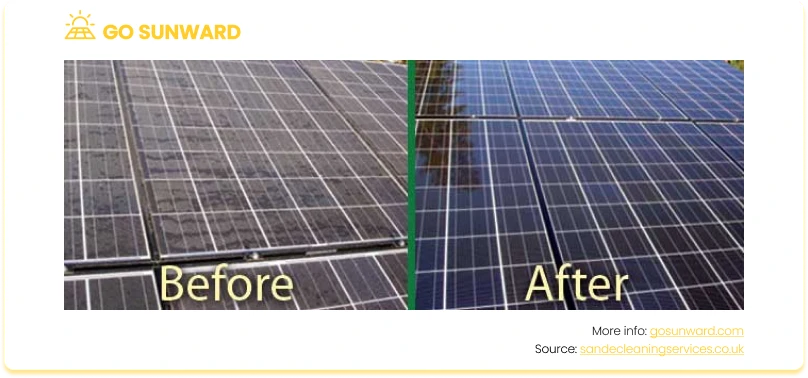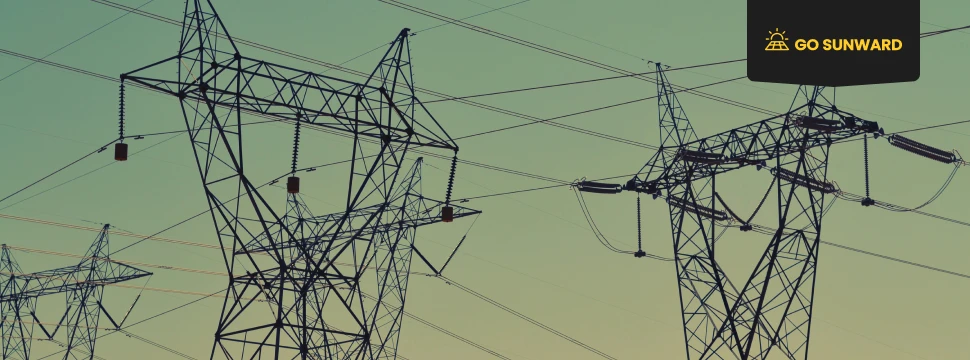What Does It Cost To Install Your Solar Panels? Can You DIY?
Solar energy is gaining traction like never before, and it’s no surprise. The prospect of harnessing the sun’s power to reduce energy bills and lessen your environmental impact is attractive. But amidst this growing interest lies a common question: What does it cost to install solar panels? And is it something you can take on as a do-it-yourself (DIY) project?
In this article, we look in detail at solar panel installation costs. We’ll delve into the intricacies of expenses associated with going solar and explore whether DIY installation is a viable option. Whether you’re a homeowner eager to embrace clean energy or a thrifty DIY enthusiast, understanding the costs and complexities of solar panel installation is essential.
Understanding The Cost To Install Solar Panels
To understand the total cost of installing solar panels, we need to break it down.
Solar panel installation costs encompass a variety of elements, each contributing to the overall expense.
Solar Panels: These are the heart of your solar system, responsible for converting sunlight into electricity. Average electricity costs are typically quantified in dollars per watt or kilowatt-hour (kWh). Our research suggests that, in the United States, the average cost of solar panels currently falls between $2.50 to $3.50 per watt. This price per watt encompasses not only the expenses associated with the solar panels themselves but also the costs related to their installation.
Regarding the pricing of an entire residential solar panel system, it’s worth noting that a typical system may range from approximately $15,000 to $25,000, prior to any application of incentives, tax credits, rebates and net metering schemes.
Solar panels come in various types, each offering different levels of durability, efficiency, and size, tailored to specific needs. There are three main panel types, with a different cost per watt: Monocrystalline panels, Polycrystalline solar panels or Thin-Film Solar Panels. For more information on the various types of panels on the market, click here.
Inverters: Inverters are critical components of solar installations. They play a pivotal role in converting the direct current (DC) electricity produced by solar panels into the alternating current (AC) electricity that powers your home. Inverters come in various types, including string inverters, microinverters, and power optimizers, each with its own cost considerations.
Mounting Systems: Solar panels need a secure and stable platform to be mounted on. Mounting systems include racks, frames, and other hardware that ensure your solar panels are firmly affixed to your roof or ground. The choice of mounting system depends on your installation location and can impact the overall cost.
Labor: Skilled labor is a fundamental component of solar panel installation costs. Installers are responsible for assembling the solar system, connecting wiring, configuring inverters, and ensuring that the entire setup functions correctly. Labor costs can vary based on the complexity of the installation, local labor rates, and the size of the project.
Electrical Components: In addition to inverters, various electrical components are needed to connect your solar panels to your home’s electrical system. These include wiring, conduit, circuit breakers, and possibly a new electrical panel. The quality and quantity of these components can influence costs.
Permits & Inspections: Obtaining the necessary permits and undergoing inspections are essential steps in the solar installation process. Permit fees and inspection costs can add to the overall expenses, and they may vary depending on your local regulations.
Additional Equipment: Depending on your specific installation requirements, you may need additional equipment, such as tracking systems (for solar panels that follow the sun), battery storage solutions, or backup generators. Each of these comes with its own cost considerations.

Understanding these components and their respective costs will help you navigate the financial aspects of your solar panel installation more effectively. It also underscores the importance of homeowners evaluating each element to make informed decisions about the cost to install your solar panels.
External Factors Influencing Costs
Several key factors that vary based on location, condition, and circumstances influence the solar panel installation cost. Understanding these elements is crucial for planning your solar project effectively and working out the full cost of installing solar panels.
Geographic Location
Where you live plays a significant role in determining installation costs. Regions with ample sunlight, like Arizona or California, tend to be more cost-effective due to higher energy output. Conversely, areas with lower sunlight levels, such as New York or Colorado may require larger systems, increasing overall costs.
Roof Condition
The condition and type of your roof affect installation expenses. A structurally sound roof is essential for supporting solar panels. Repairs or reinforcement, if needed, can add to costs. Roofing material can also impact complexity and labor expenses. If you live in a complex you’ll need apartment solar panels and that will also influence the costs.
Shading
Shading from trees or nearby structures can decrease solar panel efficiency. To mitigate this, additional equipment like shading analysis tools, optimizers, or microinverters may be necessary, adding to installation costs.
System Size
Installation costs directly correlate with the size of your solar system. Larger systems with more panels are pricier. Energy needs, available roof space, and budget determine system size. To gauge the system size you need, click our helpful article here.
Incentives and Rebates
Government incentives, tax credits, and rebates can substantially reduce installation expenses. They vary by location and can significantly impact the return on investment.
Local Regulations
Complying with local building codes, permitting requirements, and regulations can affect costs. Additional paperwork and fees may be involved. Knowledge of and adherence to local rules are essential in the installation process.
DIY vs. Professional Installation
When it comes to harnessing the power of the sun through solar panels, you have two main paths to choose from: embarking on a DIY solar panel installation adventure or entrusting the task to professionals. Both options come with their own set of advantages and considerations.
DIY Solar Panel Installation: Advantages
#1 Cost Savings: The most enticing allure of the DIY route is undoubtedly the potential for cost savings. By taking on the installation yourself, you can bypass labor charges and, in some cases, reduce the overall expenses associated with going solar.
#2 Customization: DIY installations offer you the flexibility to design a solar system tailored to your specific energy needs and preferences. You have the creative freedom to select the solar panels, inverters, and mounting systems that align perfectly with your vision.
#3 Personal Satisfaction: There’s an undeniable sense of personal satisfaction that results from successfully completing a DIY solar panel installation. The pride of having played a hands-on role in powering your home with clean energy can be immensely rewarding.
DIY Solar Panel Installation: Disadvantages
#1 Technical Expertise: Solar panel installation is a complex and technically demanding process. It involves electrical work, precise measurements, and structural considerations. Without the necessary expertise, you run the risk of making costly mistakes that could lead to inefficiencies or even safety hazards.
#2 Safety Concerns: DIY solar installations pose safety concerns, particularly if you’re not experienced with working on rooftops and handling electrical components. There’s a risk of accidents and injuries.
#3 Impact on Warranties: Many solar panel manufacturers and equipment warranties explicitly require professional installation. Opting for a DIY approach could potentially void these warranties, leaving you without the protections they offer.
Comparing Costs
While the allure of cost savings with a DIY installation is undeniable, it’s vital to consider the complete financial picture. DIY installations tend to result in lower upfront costs due to excluding labor charges. Meanwhile, professional installation comes at an additional expense that covers labor, equipment, and the installer’s expertise. Investigating the long-term savings and potential revenue generated by a professionally installed solar panel system is essential. Experienced installers can optimize system design and performance, potentially increasing energy savings.
A Note On Maintenance & Panel Lifespan
Solar panels are renowned for their longevity and minimal maintenance requirements. Typically, they come with warranties that guarantee their performance for 20 to 25 years and a life expectancy beyond that.
However, to ensure optimal performance, it’s essential to conduct regular inspections and cleaning. Keep an eye on factors such as dirt, debris, or bird droppings that may accumulate on the panels and hinder their efficiency. Additionally, consider the condition of the mounting system and wiring to ensure they remain in good working order. For more detailed information on the maintenance requirements with solar panels, click here.

Can You Do Maintenance Yourself?
While some basic maintenance tasks, such as cleaning the panels, can be performed by homeowners, exercising caution and following safety guidelines is essential. Working with electricity and climbing onto the roof can be hazardous, so if you’re uncomfortable with these tasks, hiring a professional for maintenance is advisable.
Many solar installation companies offer maintenance services, ensuring that your panels continue to generate clean and sustainable energy for decades while adhering to safety standards.
Steps To Take For A DIY Solar Panel Installation
If you decide that a DIY solar panel installation is for you and aligns with your capabilities and objectives, you can follow these steps!
- Site Assessment: Evaluate your property’s suitability for solar panels, considering factors like sunlight exposure and roof condition.
- Equipment Selection: Choose the right solar panels, inverters, and mounting systems for your project.
- Permitting and Regulations: Obtain the necessary permits and ensure compliance with local building codes and regulations.
- Installation: Physically mount the solar panels, connect wiring, and configure the system.
- Safety Precautions: Implement safety measures to protect yourself during installation, including proper electrical precautions and fall prevention.
If DIY Isn’t For You, Don’t Panic
While DIY installations offer cost advantages, professional installers bring valuable expertise to the table, and hiring professionals remains a good option.
Professional installers have the knowledge and experience to ensure your system is optimally designed and installed. Furthermore, many installers provide warranties on their workmanship, which can safeguard your investment. Professionals are also well-versed in local building codes and regulations, ensuring your installation is compliant.
If you choose professional installation, it is worth considering their reputation. Look for reputable companies with a track record of successful installations and satisfied customers. In addition, obtain multiple quotes, review contracts thoroughly, and clarify any questions or concerns before proceeding.
Numerous companies specialize in installing solar panels. These companies are often referred to as solar installation or solar energy companies. They specialize in designing, installing, and maintaining solar panel systems for residential, commercial, and industrial properties. Some well-known solar installation companies include Sunrun, Vivint Solar, Tesla Solar, SunPower, and many local and regional solar companies. These companies typically offer a range of services, including assessing your property’s solar potential, designing a customized solar system, obtaining permits, installing the panels, and providing ongoing maintenance and support.
Ultimately, the choice between DIY and professional installation depends on your technical capabilities, willingness to take on the project’s challenges, and long-term goals for your solar panel system.
Conclusion
In our journey through the world of solar panel installation costs and the DIY option, we’ve uncovered a multitude of considerations and possibilities.
In this article, we examined the choice between DIY solar panel installation and hiring professional installers. While DIY offers cost savings, customization, and personal satisfaction, it requires technical expertise, safety concerns, and potential impacts on warranties. Comparing the costs of both approaches, including long-term savings, emphasized the importance of considering the complete financial picture.
In the end, the choice between DIY and professional installation is a personal one, influenced by your technical skills, comfort level, and long-term objectives. It’s essential to evaluate your unique circumstances and make a decision that aligns with your goals.
Thoroughly research your options, obtain multiple quotes, and seek professional advice when needed. Solar energy holds immense potential for both cost savings and environmental benefits and with the right choices, you can harness the sun’s power to transform your energy landscape.




